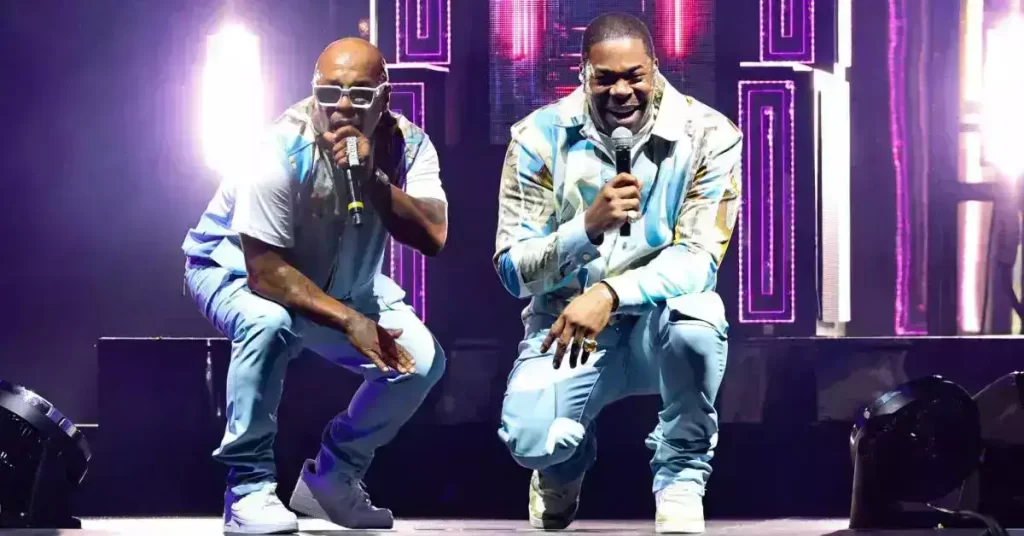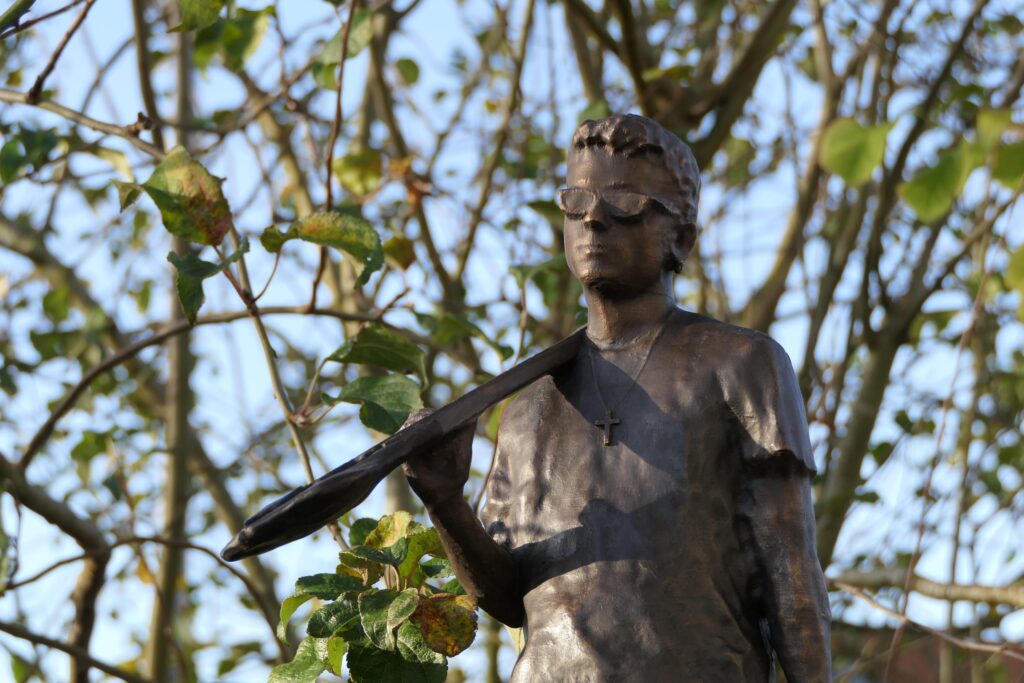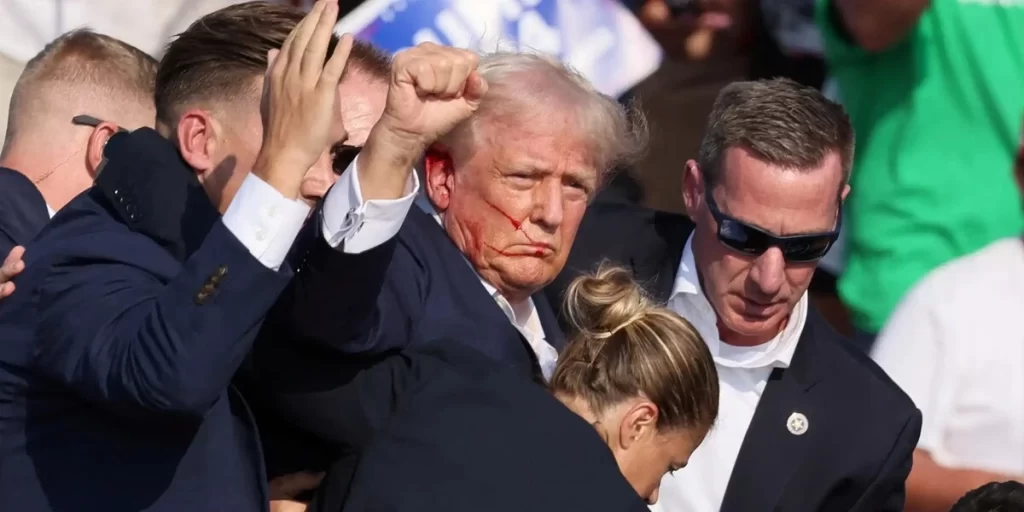50 Cent and Busta Rhymes Unite Generations on the Golden Jubilee, Ignite Hip-Hop’s Future
In the bustling heart of BROOKLYN, New York, an electrifying convergence took place as hip-hop legends 50 Cent and Busta Rhymes orchestrated a harmonious bridge across generations of rap aficionados. The vibrant night unfolded on the eve of hip-hop’s monumental 50th anniversary(Golden Jubilee), a profound milestone that stirred emotions and ignited retrospection. The duo seized the occasion to pay homage to the genre’s rich history while simultaneously illuminating the path forward for the up-and-coming talents who will shape its future.
On Thursday night, a crescendo of anticipation enveloped the audience, as the illustrious rappers commemorated the past and set ablaze the potential of the future. The stage was set for 50 Cent’s The Final Lap Tour, a poignant tribute to the 20th anniversary of his seminal album “Get Rich or Die Tryin’.” The performance was masterfully designed to be a nostalgic journey back in time while simultaneously embracing the contemporary sonic landscape.
The dynamic setting for this celebration was none other than the Barclays Center, a coliseum that echoed with the cheers of hip-hop enthusiasts. As the night unfurled, Busta Rhymes, known by his birth name Trevor George Smith Jr., who hails from the very streets of Brooklyn, seized the microphone and spoke with reverence. “At midnight tonight, hip-hop turns 50 years old,” Busta Rhymes exclaimed, his words reverberating through the eager crowd. “Can you believe this? 50 years old. At midnight.”
The weight of this moment was palpable, as attendees clad in New York-branded apparel paid homage to the birthplace of hip-hop just a stone’s throw away from where it all began. The fusion of generations, the blending of eras, was a testament to the enduring influence of this cultural phenomenon.
50 Cent, whose real name is Curtis Jackson, effortlessly tapped into the nostalgia coursing through the air. His performance transported the audience back in time, resonating with cherished tracks from his debut album. Hits like “In Da Club,” “21 Questions,” “P.I.M.P.,” “What Up Gangsta,” and “Many Men (Wish Death)” reverberated through the air. The stage came alive with a symphony of smoke, fire, and sparks, a visual testament to the intensity of his music.
Rooted in his Queens upbringing, 50 Cent used a digital backdrop to conjure the essence of his neighborhood. Brownstone buildings, the Queens Plaza Station stop on the subway, and the corner bodegas materialized, painting a vivid tapestry of his formative years. At 48 years old, he exuded the same vitality and charisma that had marked his early days, proving that the lyrical longevity of rappers rivals even the most enduring pop icons.
The performance was elevated to grandeur by opulent jewelry that adorned 50 Cent, while his troupe of skilled dancers added an extra layer of glamour. For the more audacious numbers, the dancers commanded the stage, seamlessly transitioning from pole routines to synchronized chair dances, showcasing their athleticism and artistry.
Departing momentarily from the nostalgia of his debut, 50 Cent delved into a medley of hits that spanned his career. From “Hate It or Love It” to “Candy Shop,” “This Is How We Do,” and beyond, the rapper painted a mosaic of his evolution. Collaborations with artists like Uncle Murda and G-Unit rapper Tony Yayo added new dimensions to his performance, rendering the experience multifaceted and vibrant.
In an interview earlier, 50 Cent had promised to venture into less charted territory during his tour. “Sometimes out of habit, you go to certain records. People love other things on it, so I want to make sure I touch those records before I don’t do those anymore,” he mused. And true to his word, the audience was treated to a cascade of tracks that had seldom graced the spotlight before: “Hustler’s Ambition,” “Soldier,” “Gotta Make It to Heaven,” “Southside,” “In My Hood,” and a repertoire that was as diverse as it was dazzling.
Guest appearances punctuated the performance, infusing the night with even more star power. Fat Joe, Young M.A, Bobby Shmurda, A Boogie wit da Hoodie, PHresher, and Jeremih, the tour opener, added their distinct flavors to the mix. A poignant moment arrived as 50 Cent paid tribute to the late Brooklyn rapper Pop Smoke, breathing life into his posthumous track “The Woo.”
Prior to the headlining act, Busta Rhymes, known offstage as Trevor George Smith Jr., seized the spotlight with a performance that left the audience electrified. Collaborating seamlessly with his longtime accomplice Spliff Star, Busta Rhymes delved into an array of hits, including “Touch It,” “Pass the Courvoisier, Part II,” and “I Know What You Want.” The intensity of their performance was uninterrupted, captivating the stadium with pulsating energy and scarcely allowing a moment of respite.
Busta Rhymes paid homage to the birthplace of hip-hop by showcasing the potential of the genre’s next generation. Emerging talents like Brooklyn’s own Lola Brooke, Harlem rapper Scar Lip, and the Bronx legend Remy Ma each took the stage, their voices adding new layers to the ever-evolving narrative of hip-hop. Lola Brooke’s rendition of “Don’t Play With It,” Scar Lip’s resonant “This Is New York,” and Remy Ma’s fierce verse in M.O.P.’s “Ante Up” remix, alongside Busta Rhymes, formed a harmonious blend of past, present, and future.
Through the crescendo of beats and verses, one message resonated deeply: hip-hop is a continuum that defies temporal boundaries. It’s a tapestry woven from the threads of the past, the pulse of the present, and the dreams of the future. On that spirited night, 50 Cent and Busta Rhymes stood as living embodiments of this truth, crafting an unforgettable chapter in the ongoing saga of hip-hop’s evolution.



